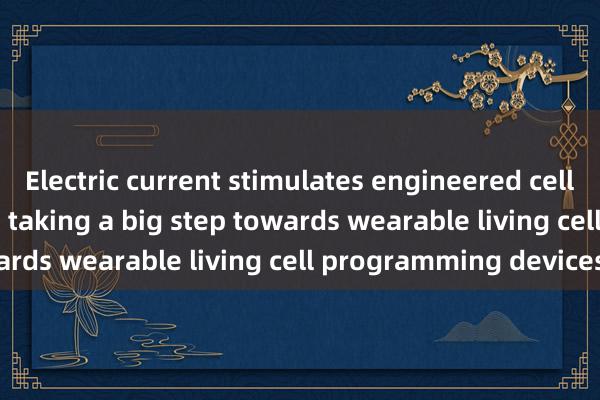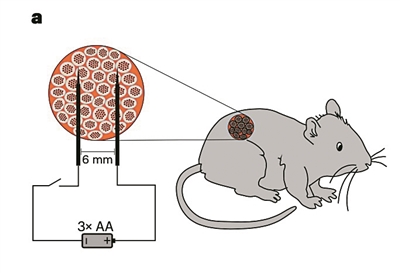The schematic diagram shows encapsulated DART engineered cells implanted into the back of mice, and the DART system can be used to treat type I diabetic mice. Image source: "Natural · Metabolism" [Editor-in-Chief Circle] Scie...

The

schematic diagram shows encapsulated DART engineered cells implanted into the back of mice, and the DART system can be used to treat type I diabetic mice. Image source: "Natural · Metabolism"
[Editor-in-Chief Circle]
Science and Technology Daily, Beijing, July 31, According to a biotechnology breakthrough published in "Natural · Metabolism" on the 31st, scientists have achieved the activation of gene expression in modified human cells with current. This is a proof-of-concept study modeled on diabetic mice, and the experimental system can inspire engineered human cells to produce insulin. This achievement promises to lead to a new wearable device that can program living cells.
Wearable electronic devices are used to monitor health parameters such as physical activity and blood sugar levels, but they are not currently used to directly alter genetic activity. Devices that can control gene expression will greatly facilitate medical intervention, activate or silencing specific gene expression, such as increasing the production of specific hormones in the body.
The ETH Zurich team in Switzerland has proof of concept of gene expression in human cells that can be controlled by current. They developed a “electrogenetic ” interface called DC-excitation regulation technology (DART), which can be powered by DC power from batteries, and designed an intrinsic sensing system for human cells to activate selected genes. This system detects reactive oxygen species produced by ions produced by electrodes (a class of molecules that are prone to react to other molecules).
The team then used this technology to modify human cells, activate the expression of the insulin gene by electrical stimulation, and then put the cells into gel capsules to test in mice. The gel capsule was implanted into the backs of five male mice with type I diabetes. The researchers sent a 4.5 volt electric stimulation to them once a day with acupuncture needles for 10 seconds, and found that this stimulated insulin production and restored normal blood sugar levels.
The research team said that this electrogenetic interface may help develop new gene- and cell-based therapies in the future.
Let living cells "stay" create conditions for life and health in wearable devices, and this innovation has opened up a new path for precision medicine. For a long time, we have used chemicals and physical therapy to stimulate the human body, hoping that it will transform in the direction we expect, but the human body's environmental factors are complex, and the reactions in the laboratory may not be able to be replicated in the body as they wish. Now that we accurately stimulate a small number of cells, the manipulation is greatly enhanced. I believe that many patients with difficult and complicated diseases will benefit from this in the future.